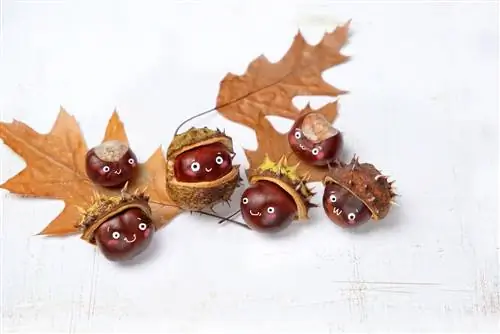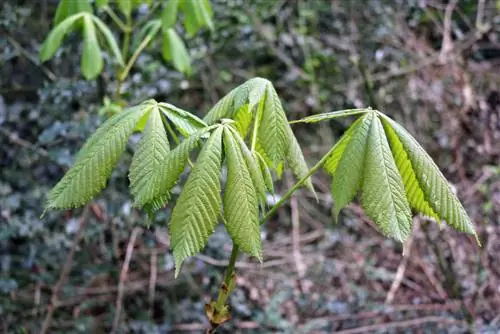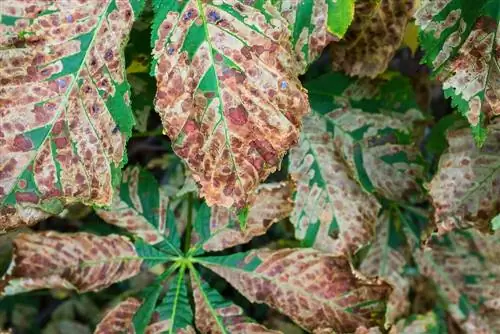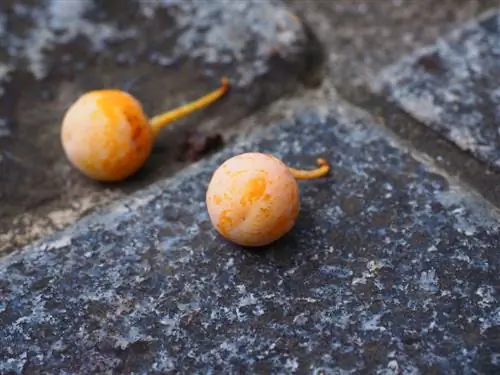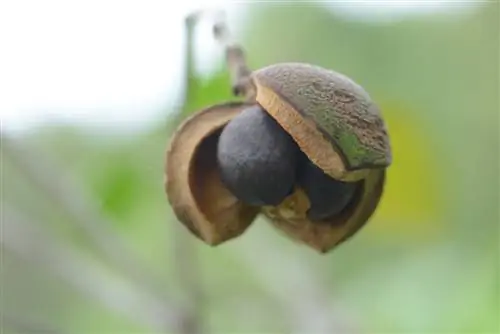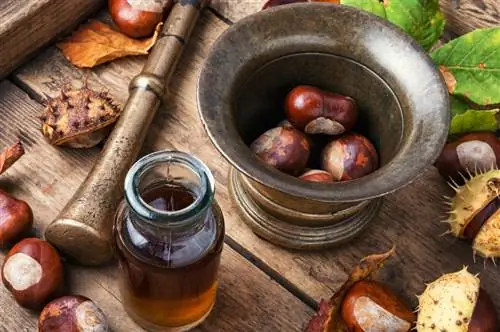- Author admin [email protected].
- Public 2023-12-16 16:46.
- Last modified 2025-01-23 11:22.
Not only children love the velvety brown seeds of the horse chestnut. Chestnut collecting is a popular activity every autumn and many people search for chestnuts in the colorful foliage in parks and avenues. Here you can find out what the seeds of the horse chestnut can do.
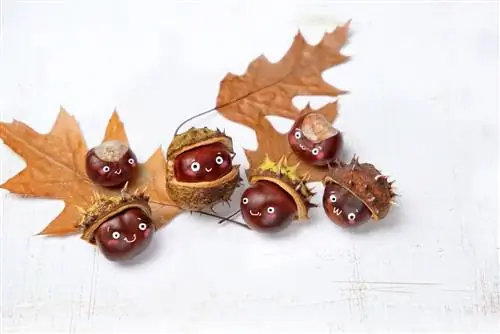
What are horse chestnut seeds known for?
The seeds of the horse chestnut are shiny brown, spherical chestnuts with a dark brown shell and a light navel. They spread by gravity, germinate in spring and are used as craft materials, natural detergents and in medicine to relieve venous problems.
What do horse chestnut seeds look like?
Theglossy brown seeds of the horse chestnut are located on the tree in a light green, spiny capsule fruit that protects them from being eaten by animals until they are fully ripe. Each capsule usually contains a single seed, but it can also happen that two to three seeds grow in one capsule. The spherical chestnuts are two to seven centimeters large, have a dark brown shell and a large, light spot, the so-called navel.
How do horse chestnut seeds spread?
The seeds spread through the so-calledgravity migration, a very rare form of dispersal in the plant world. In the fall, the capsule dries out until it either bursts open or falls off the tree on its own. At the latest when the capsule hits the ground and breaks apart, the seeds fall out, roll several meters depending on the nature of the ground and ultimately remain lying there.
How does a chestnut germinate?
A horse chestnut seed remains over the winter andgerminates in spring It is a matter of chance whether the fallen chestnuts end up in a suitable or unsuitable place for germination. If the seed dries out over the winter months, it will not germinate. It needs a moist place that is ideally protected from leaves. Rainfall in winter washes it deeper into the earth so that the roots can find support and nutrients in spring. Chestnuts are a popular food source for many animals in autumn and winter. This also means that only a few chestnuts on a tree produce small trees the next year.
What can you use horse chestnut seeds for?
Chestnuts are not only suitable forcrafts and as a natural autumn decoration because of their beautiful color. Thanks to the ingredients they contain, they are also known for many other applications. For example, they were previously used to make soap because of the saponins they contain. Even today, chestnuts are still a natural alternative to detergent. The Ottomans used chestnuts as horse feed, which is where the name “horse chestnut” comes from. Chestnuts are still used in medicine today because their healing properties can help with venous problems.
Tip
Feeding wild animals with chestnuts
If you have collected more chestnuts in the fall than you can handle or if the fall decorations are slowly giving way to winter decorations, you can feed the chestnuts to wild animals. Simply take them with you on your next walk in the forest and leave them in a protected place. Alternatively, you can also give the chestnuts to some wildlife parks, which will then use them for feeding. Since chestnuts are food for wild animals, you should only collect small quantities of them in the forest. Parks and roadsides in urban areas where there are no wild animals are more suitable.

